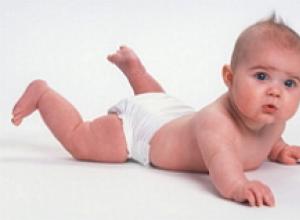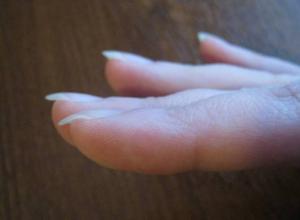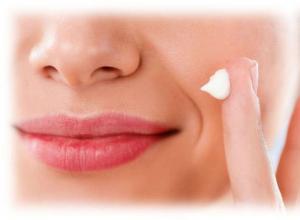Is it possible to use perfume in summer? Perfume application technique
Whether it's Chanel No. 5, which a naked Marilyn Monroe "dressed" before going to bed, or your scent, which is smelled every morning in the elevator by subordinates, there is one thing that unites us all: the desire to smell for as long as possible. Ivan Bezugliy tells how to prolong the sound of your favorite perfume.
Have you noticed that the aroma disappears during the day? There is a dubious and unverified version that if a fragrance suits you very much, then over time you stop feeling it on yourself. You can somehow come to terms with this if everyone else hears it and asks questions that tickle your pride. But when neither you nor those around you hear it, a slight panic begins mixed with sadness and, as a result, manic application of perfume to your wrists throughout the day.
It turns out we are doing everything wrong! More precisely, not entirely correct. Yes, the wrists are considered to be mass classics for applying perfume, but there are many more pulsation points on the human body. And when they are all involved in this complex mechanism, the aroma hangs in the air for an indecently long time. So before applying the perfume to these six places, make sure that you really like it and are ready to enjoy it forever. The opinions of others are not taken into account: they tolerate it, which means they love it.
1. Hair
Believe it or not, the founder of the Byredo perfume brand Ben Gorham believes that hair often stores fragrances stronger than skin: “You just need to be a little careful, because perfume contains alcohol, which can harm your hair. Use versions of fragrances created specifically for hair, or, if your perfume does not suffer this fate, simply spray it on your brush. When combing your hair, the aroma is subtly and delicately “absorbed” without much risk of drying it out.

2. The area behind the ears
Like the wrists, these areas are known for their properties even among the uninitiated. The veins here are located close to the skin, creating ideal conditions for heating and evaporation of the aroma. If you also wear jewelry, then after spraying the perfume, it can even retain your scent for some time. The founder of the by Kilian brand, Kilian Hennessy, gave this idea an industrial significance and invented earrings, pendants, pendants and all sorts of other cute little things, inside of which you can place a ceramic ball sprinkled with your scent.

3. Back of the neck
It may seem a little strange, but perfume expert Chandler Burr assures that this trick will drive you crazy. Firstly, the scent lasts a long time on your body; secondly, he does not bother others, since he whispers rather than recites at the top of his voice. Before buttoning the collar of your blouse, spray the area inside where the fabric touches the skin and go as a test to a place where it is hot, crowded and there are a lot of men.

4. Inner surface of the elbow
Knowledgeable people say that this area “sounds” even more seductive than the wrists. The founder of the Editions de Parfums Frederic Malle brand Frederic Malle recommends moisturizing the skin there additionally before applying perfume - scented (from the bath line of your fragrance) or universal and unscented, so as not to disturb the magic.

5. Back of the knees
Of all the listed zones, this is the most actually working. Even men, if they are interested. Just try to do this as privately as possible - this gesture looks, at least, funny and not at all sexy. Then physics begins: air currents rise upward, where it is always hotter than below. The peculiarity of this place is that the smell is not immediately audible, but after it makes itself known, be prepared to face the answer.
The durability and intensity of the sillage depend on the technique of applying the fragrance. If perfume is used incorrectly, its scent may not be revealed or distorted. The type of perfume, the direction of the aroma, the time and method of application, and the selected areas of the body are important. Perfumers share their secrets: how to use eau de toilette so that it pleases with its longevity and fragrance.
Rules for using perfume
Perfumed or eau de toilette is applied to clean, dry skin before dressing. It is more effective to apply aroma to points with high pulsation:
- wrists;
- collarbone;
- area behind the ears;
- bend your elbows and knees.
These areas have thin, hot skin - the perfume evaporates more intensely, and the trail will be more pronounced.
 It is important to choose the correct dosage. For rich eau de parfum, 2-3 sprays are enough. The limit for eau de toilette is 6 sprays.
It is important to choose the correct dosage. For rich eau de parfum, 2-3 sprays are enough. The limit for eau de toilette is 6 sprays.
Interesting: 1 ml of perfume is enough for 10-12 sprays. A high-quality product has high durability and will be consumed more slowly than a cheap analogue.
The perfume should be appropriate for the chosen time of day and season.
Neutral light aromas from the aquatic or aromatic group, or citrus aromas are suitable for work and business meetings. Women are advised to pay attention to light floral or green scents.
Richer, deeper scents with an expressive trail are suitable for the evening. For example, from the group of oriental, chypre or woody. Evening is the time for spicy, piquant, “thick” notes. For example, sandalwood, patchouli, vetiver, pepper, jasmine, amber, incense.
The seasons have their own unspoken rules:
- In spring and summer, ringing, light floral, citrus, and aquatic scents are appropriate. They sound good in the heat and do not cause negativity among others.
- Autumn and winter are the time for gourmand and vintage perfumes. In the cold, powdery aromas, notes of vanilla, caramel, and cocoa are revealed well.
Stages of applying perfume
A high-quality aroma is multifaceted and changes several times during the day. Among experts, the term “perfume pyramid” is used - a set of odors, divided into several levels that replace each other. Each individual scent in a perfume mixture is called a “note.”
In the first ten seconds, the top notes are revealed. The strong smell of alcohol is acceptable. After it evaporates, the “heart” notes begin to sound - the main part of the perfume pyramid. Heart notes sound the longest - up to 4-6 hours. They are the ones who provide the trail.
After the heart notes evaporate, the “base” begins to sound. The base notes have no trail and are only audible if you get close to the skin.
Where to apply eau de toilette for men
Men's eau de toilette is applied to pulsating areas of the body: wrists, neck, collarbones, area behind the ears. You can also “enter” the sprayed “cloud” of perfume - it will be evenly distributed throughout the body. It is not recommended to splash water locally on the chest - many sweat and sebaceous glands are located in this area. The sweat produced will distort the smell.
You need to wear perfume at a distance of 20 cm from your body. The scent lasts best on oily skin types. In order to feel the trail, it is necessary to spray the product on the skin, and not on clothes. According to etiquette, the train should be felt upon close contact.
How to apply perfume for men
 In order for the aroma pyramid to unfold properly, it is necessary to follow the application rules. How to properly apply perfume for men:
In order for the aroma pyramid to unfold properly, it is necessary to follow the application rules. How to properly apply perfume for men:
- The aroma is applied to a clean, dry body. The fragrance of deodorant and shower gel should not be felt.
- Before going out, spray perfume locally onto pulse points: wrists, neck, 2-3 times.
- After 3 hours, you can refresh the aroma by spraying a “cloud” in front of you.
- You can’t cover up the smell of sweat, cigarettes, or food with perfume.
- After shaving, do not apply cologne or eau de toilette to your neck. Alcohol causes irritation and pain.
Men's perfumes, depending on the concentration, are divided into several categories:
- Perfume – from 10% aromatic oils;
- Eau de parfum – 7-10%;
- Eau de toilette – 3-7%;
- Cologne – up to 3%.
The greater the concentration of aromatic substances in the liquid, the greater the durability of the perfume. Perfume and eau de parfum will last up to 6-8 hours. They can be updated once a day. Toilet – up to 5 hours, it can be updated every 3 hours. The cologne lasts 1-1.5 hours.
How to use eau de toilette as a woman
 Perfumery connoisseurs use three methods of applying perfume: spread, “cloud” and standard spray. How to wear women's perfume correctly:
Perfumery connoisseurs use three methods of applying perfume: spread, “cloud” and standard spray. How to wear women's perfume correctly:
- The classic spray is suitable for applying everyday scents before going out;
- Namaz is the precise application of a drop of fragrance onto the skin using a finger or a perfume cap. The method is used for concentrated, intense aromas, as it muffles them;
- The sprayed “cloud” evenly distributes perfume particles on clothes and body. Recommended to use to refresh your scent throughout the day.
The rules for applying women's fragrances are similar to men's. The liquid is applied to a clean, dry body. 3-4 sprays are enough. The scent can be renewed after 4 hours.
In addition to the wrists, neck and earlobes, women can apply perfume to the following areas:
- neckline;
- whiskey;
- back of the head;
- bends of elbows or knees.
These areas are characterized by high pulsation of blood arteries and dense, moisturized skin. When used on the temples or back of the head, the head must be freshly washed - sebum “oxidizes” and distorts the smell of perfume.
To better reveal the aroma and increase its durability, follow the advice of experts:
- Do not mix different perfumes, as the new combination of notes may sound unpredictable. Remember that the scent can last up to 3 days on clothes and hair.
- The soap, shower gel, and deodorant used should not contain persistent fragrances to prevent mixing of incompatible aromas. Or use perfume with body cosmetics of a similar scent.
- The durability of the product can be increased by applying a thin layer of Vaseline or fatty cream without fragrance to selected areas of the skin in advance.
- Do not spray perfume close to clothing as it may leave oil stains.
- Remember that natural fabrics, wool, and fur absorb aroma for a long time. Synthetics almost do not retain the smell of perfume.
- You cannot use perfume instead of deodorant. There are no deodorizing particles in it, so it will simply mix with the smell of sweat and give off an extraordinary “amber.”
- It is forbidden to use expired fragrance, as it can cause irritation or even burns. Liquid separation, changes in odor and color indicate an expired expiration date or damage as a result of improper storage. Be careful.
Conclusion
Follow our advice, and then the pyramid of your aroma will unfold in all the splendor of its sound. Apply perfume correctly to the right points, and you will delight for many hours, and those around you will feel the fragrant traces of your presence for a long time.
We will be grateful if you share your secret techniques for applying fragrant liquids in the comments.
In the material:
Three nose rule
Everything said below, although they are rules, is quite relative. When studying norms, you should look at them through the prism of sympathy for the aromas of your environment. Let's call it compromise of three noses, although in fact there may be many more noses. All three conditions must be met:
- First nose. This is, in fact, yourself. Everything here is banal - you have to like the aroma. What, why, because of what - in this case, it doesn’t matter. One thing is important - you like the perfume.
- Noses of the second level. This is your immediate environment: spouses, children, parents. These are the people who will come to smell your perfume most often and most closely. Should they like your perfume? It would be nice, but it’s not always possible to match your perfumes to the liking of all your loved ones. Therefore, the main condition here is: the aroma should not irritate. It's enough.
- Noses of the third level. These are colleagues, classmates, friends, participants in events. It is impossible to choose perfumes to suit everyone's tastes., as they say, by definition. In a large group, there will always be someone for whom your scent is “no good at all,” “it would be better if it smelled like garlic,” etc. There is no need to waste time, nerves and money to please everyone - it doesn’t happen that way. Therefore, here is the main rule: perfumes shouldn't harm! Indeed, if your boss gets a headache from your perfume or a subordinate breaks out in a terrible rash, the scent needs to be changed. In cases of simple antipathy, let them resign themselves. You probably don't particularly like their choice either.

How to choose the right scent for you, the stages of development, how it sounds on different skins and other useful information have already been discussed in this article - if you haven’t read it yet, be sure to read it.
We will now move on to analyzing established stereotypes, rules and myths.
Places for applying perfume
These rules are, in most cases, correct in many sources. Indeed, it is better to apply perfume to the skin in places where the pulse is felt, as well as to the hair. The temperature in such places is a little higher, sweating is stronger than on smooth skin, but not as intense as, say, under the armpits - all this contributes to better development of the aroma and its long-term preservation.
If there is a dispenser, 1-2 “sprays” are carried out. Without it, a drop is applied to the pad of the index or middle finger, from which it is transferred to the appropriate places with light touches.

Main places for applying perfume:
- wrists;
- elbow bends;
- neck back;
- behind the earlobes;
- breast hollow;
- hair;
- under the knees.
A little more about the low points. Sometimes strange questions arise, like why under the knees, “who will smell my feet?” I’m not going to get into your personal life, so we’ll get by with the physics of the process. Everything has been known here since school: warm air rises. The temperature of our points, as already mentioned, is higher, which means the evaporated aroma will rise.
During the day, people are in different temperature conditions, and the environment affects the revelation of spirits. Therefore, there are several points, almost along the entire height of the body. Sometime the neck will “work”, in other conditions the places under the knees will work.
I don’t think men need to strictly adhere to all these rules. Here the norm should come first - don’t overdo it! Although, if you have allowed yourself to “grow” the hollow of your breasts, then maybe this method is worth adopting. But better take care of yourself!
Arm's length distance
Increasingly, the “norm” comes across that a fragrance should smell fragrant at a distance approximately equal to an outstretched arm. Anyone who is even slightly familiar with perfumery understands the absurdity of this statement. Where, then, should we put such concepts as “sillage” (the distance from the point of application to the maximum accessible smell), which can be long and short? How to feel about a perfume whose sound many describe as “close to the skin”?
You can approach it from the other side. How are you going to measure this distance? Grabbing the air into the fist of an outstretched hand and quickly bringing it to your nose? Using expensive analyzers? Or will you place a dozen acquaintances at different distances from you and interview them? Agree, in any case, stupidity.
Sorry for the bad wording, but perfume has the trail that has. Any scent can be appropriate under the right circumstances. Of course, if your scent appears a few meters ahead of you, you may have gone too far. Everything should be within reason - this rule can be applied in any area of life, incl. and in perfumery.
Don't mix scents
This is probably the most controversial point. Perfume is perfume, but in the modern world there are many other external odors on our body: deodorant, shampoo, soap / shower gel, washing powder, many hair products, creams, etc. All this, as a rule, has its own flavors, and whether they all come together is a big question.
There are often cases when, having purchased their favorite and very expensive perfume, people try to save money on the same deodorant. As a result, a luxurious, expensive smell is mixed with a cheap, often low-quality one. Which one will win? It’s easy to guess, but in any case, it will be the wrong perfume, and the overall impression may deteriorate.

It is no coincidence that famous brands began to produce perfumes, deodorants, etc. with the same (same) scent. This is, of course, the way out. Such smells do not conflict. However, collecting a whole arsenal of necessary products for one scent will cost a pretty penny. Considering that different occasions require different scents, the cost of such sets will not be affordable for everyone.
There is a way out, and it is in understanding simple things:
- You can mix scents, the main thing is to do it right! There are even special perfumes designed to mix different scents.
- Perfume is not the only smell. The overall impression is formed by a “cloud”. You need to experiment with it.
- You don’t need to have the knowledge and sense of smell of a perfumer to pick out different scents in a general cloud. Just take a closer look at the reactions of others and listen to your feelings. There really aren't many flavors that directly clash.
- Try select the easiest accompanying drugs, preferably neutral odors.
Experiment, try, practice shows that creating your own cloud is not at all difficult. And forget about “smells cannot be mixed”, if only because of the impossibility of fulfilling this “rule”.
There is a time for every perfume
This is the true norm. Everyone knows that there are rich, evening scents, and there are light, everyday ones. Here you can add green, aquatic perfumes, which are more suitable for warm weather; and heavy (for example, oriental) compositions, whose time is winter. All this is true, but if perfumery obeyed strict rules, it would be called mathematics...
You have to understand that cold scents actually retain great longevity in the cold, but we are with you - thank God! - we don’t live on the street, and sooner or later we will find ourselves warm. How will the same oriental perfume behave if it finds itself in a warm office? Will we turn into chemical weapons for those around us? This must be kept in mind when choosing a composition for daytime wear.

Another consideration is skin type. If you have already read the material “How to choose your fragrance” (the link is at the beginning of this article), then you know that oily skin “retains” the fragrance better, i.e. It lasts longer on the skin, but disperses less easily in space. With dry skin, everything is exactly the opposite - it evaporates quickly, but the smell is stronger. Based on this, among other things, perfumes are selected.
But perfumes are not always clearly winter or summer; many compositions are in between. This means that the same scent may well be a summer scent for girls with oily skin and a winter scent for dry skin. The solution is still the same - test the compositions you like under different circumstances.
Apply to clean skin
Hygiene is the key to health. This is not discussed. And the method of applying perfume is by no means of paramount importance here. The logic of this rule is also obvious: on clean skin the scent will not be interrupted by others. Do you think it's that simple? No matter how it is!
Everywhere has its “buts,” and clean skin is no exception. Just let's first determine that the alternative to clean skin (in our case) is not dirty. We will not consider options for lack of hygiene at all. Ugh! We will talk about the skin immediately after the shower and a few minutes later.

Problem #1. Oily skin
The effect of oily skin (long retention of perfume) is due to fatty particles contained in the fluids secreted by the sweat glands. It is the microscopic fatty layer on the skin that, when mixed with the components of perfume, retains the smell.
Now imagine that, wanting this effect, you apply perfume to skin that has just been cleansed with soap/gel. Basically, detergents are alkaline solutions designed to wash away grease. That is, immediately after the shower there is no “film”. There is no effect. While the fat is released, the perfume may evaporate. It's better to wait a little.
Problem #2. Dry skin
It would seem that if such issues arise with oily skin, then with dry skin everything should be the other way around. This is partly true. But not completely. More often this is true for men, but not because of anatomical features, but because, to put it mildly, we don’t care. Got into the shower - soaped up - rinsed off - got out. I dried myself off. If it's not laziness. And then he spanked, leaving wet footprints in the corridor.
For ladies, everything is completely different. Each of them knows that if dry skin is not treated with creams after a shower, it can begin to peel, peel, etc. and so on. The main thing is that after washing, products, often greasy, will be applied to the skin. And, as you know, they have their own scents, which should not always be mixed with perfume. It's better to wait for complete absorption.
What should those with normal skin do? Rejoice! You can apply perfume at any time. For mixed types, it is better to try different options and choose the most suitable one.
Problem #3. Molecule iso e super and similar
If you haven’t heard such a name as iso-e-super before, don’t be alarmed now. This (and many other similar) molecules are part of modern innovative perfume compositions, which sound special on everyone (at least, they try very hard to do so). The most famous example of such a perfume is Molecule.

Marketers claim that for the molecule to start working, it must “recognize a person’s personal code.” In simple words, our sweat is as individual as our fingerprints. Mixed with it, the components of the perfume react, transforming the composition into something original. In principle, this is the problem - if there is nothing to mix with, there will be no effect.
What happens if you apply it to clean skin and wait a little (until the sweat glands start working)? There will be an effect. Only often not the same as it was before. It’s not a fact that it’s worse, maybe just the opposite. You need to try both options, if you use such perfume!
Lack of hygiene is disgusting in itself, but sometimes it leads to surprising consequences. Take a look - there is a lot in it just on this topic, but, I warn you, reading may not be pleasant.
Perfume on Vaseline
The essence of the method is that first a small amount of Vaseline is applied to the skin, and then perfume is applied to it. This is good advice! You may have already guessed why. Vaseline creates the effect of oily skin and, accordingly, prolongs durability. You just need to understand:
- The method is suitable for dry and normal skin. For a fat woman, it is, in most cases, meaningless.
- Vaseline should be odorless.
- Use Vaseline in small portions on small areas of the skin. It is not at all necessary to use this method for all application points.

Try artificially fattening your skin (I know it’s a stupid word, but I couldn’t think of anything smarter), maybe this method will suit you perfectly.
Don't put perfume on your clothes
Increasingly, “advice” began to appear not to use perfume on clothes. Like, fabrics hold it differently, exude it differently. Yes, in different ways, so what? Is this a reason not to use perfume on your clothes?
Indeed, natural, often woolen materials can retain the aroma for a very long time, and it is not a fact that the old one will not remain until the moment when you want to use a new one, and the time for washing has not yet come. Be careful, don't overdo it, and try, try, try!
Please also remember that some perfumes may contain dyes. It is not recommended to use them on light-colored items for purely practical reasons.
Don't rub perfume on your skin
This is one of the more recently introduced “rules” but has received a lot of publicity. The argument against is presented - attention! - the possibility of damaging perfume molecules by rubbing! Dear, lovely young ladies, if you know how to “squeeze molecules with your hands,” you are obviously entitled to some very prestigious scientific prize.
Nothing too bad will happen if you rub perfume on your skin. Oils will be absorbed better, alcohols will evaporate faster. Another thing is that some of the liquid will remain on the other hand, and, therefore, less in the right place.
Cloud Monroe
There is a well-known story (or maybe a legend) that one of Marilyn Monroe’s favorite ways to apply perfume was the so-called. "entering the cloud" The famous actress is credited with saying (the quote is probably not very accurate, but the meaning is): “sprinkle the perfume in front of you and enter this cloud of aroma.”
Such the method has the right to life, since the aroma will spread evenly. It’s just suitable for fairly rich ladies, because... the consumption of perfume will be staggering. People with more modest needs than Monroe are better off sticking to traditional methods.
Perfume on underwear
I read it literally a few hours before writing this material and... I’m still in shock. The essence of the “advice”: “apply perfume to the inner seams of your underwear.” I admit, I’m not a great expert in anatomy, and if I’m wrong about something, I hope women will correct me, but underwear (or rather, what’s underneath) and alcohol-containing liquids in my opinion very bad combination.
Okay, if we are talking about men’s “family” or women’s knee-length pantaloons, there is room for improvement. But I would not recommend using perfume “at the seams” in the minimalism that is currently accepted. A feeling of discomfort is the minimum that threatens such experimenters. Maybe if there's oil...

This is where we will probably finish our review of myths and real advice. If you forgot something or know new “rules” that are not reflected here, write in the comments. Let's figure it out together!
Don't be afraid to try, but know when to stop. Good luck, health and pleasant aroma!
Sergey Polie,
especially for the project YOUR-AROMAT.RU
Persistence of fragrance is the cornerstone for many fashionistas. What to do if the perfume stops “working” too soon, but are you sure that it is not a fake? Perhaps the “salt” is in the method of application, and not in quality. The rules are the same everywhere – both for Chanel #5 and S.Oliver Superior. How to use your favorite scent correctly in order to wear it for a long time - let's figure it out together!
What are the differences between different types of perfumes?
Let's start with the type of aroma. The decision will be influenced by the season of the year, mood and budget.
To make information easier to perceive, we have placed all types in a comparative table.
Comparison table of different types of perfumes
|
Characteristics |
Perfume | Eau de parfum | Eau de Toilette |
| Advantages | Base: alcohol (- 97%) | 15-20% essential oils in a bottle | 7-10% aromas |
| Essential oils (20-30%) | Longevity on skin: 4 to 6 hours | Base – 80-85% alcohol | |
| Pleasant trail | Base – 90% alcohol | Ideal for sports and summer | |
| Lasts up to 10 hours on fabric | Pronounced, but not “heavy” aroma of the “core” | Reasonable price | |
| Ideal for an evening look and cold weather | Acceptable price | ||
| Flaws | "Heavy" for the heat | Weak scent trail | High consumption of eau de toilette, which is compensated by the affordable price |
| High price | |||
| No spray bottle |

Where to apply perfume - a couple of women's secrets
For greater durability, perfume is applied to certain points of the body - this way you will get a long-lasting effect of the aroma, but also a more complete disclosure. Such places are considered to be:
- Neck. Applied to the back of the neck, the scent will last a long time on the body and will not bother others. Spray the inside of the collar, which is in contact with the skin, and be amazed at the effect.
- Hair retains a halo of aroma much longer.
Attention!The alcohol contained in perfume is bad for hair. It is recommended to use special scents. If you don’t have one, spray eau de parfum (for example, Baldinini Woman) onto your brush and comb your hair: the aroma will be delicately absorbed.
- The back of the knees is the most “effective” zone (it works even in men). The smell applied to this point does not appear immediately, but only when the air rises upward, where it is hotter than below.
- Inner elbow. Experts advise moistening the area where the aroma is applied so as not to disturb its magic.

- The wrist is a common point on the body where perfume is applied the fastest.
Remember:The wrists are a piquant area where the scent lasts especially long. The secret is in the veins located close to the skin, which create excellent conditions for the evaporation of amber. Perfume lasts longer thanks to decorations.
- Navel. Liv Tyler confessed that her father rubbed perfume with his finger and touched it to the navel area, which helped the notes of the perfume to open up perfectly. When warmed up, the aromatic components open up more strongly and “play” longer.
This applies to both fruity and floral scents, for example, Betty Barclay Pure Style. In addition, these places interact with air currents, which, blowing across the body, gently “carry” the aroma without imposing it on others or irritating it.
Latest site materials
Horoscope

How to make a paper butterfly with your own hands
Summary: Craft butterfly. DIY paper butterflies. How to make a butterfly out of paper. Origami butterfly diagram. Butterflies master class. Butterfly pattern. How to make a butterfly from a plastic bottle. Crafts from plastic bottles. In the spring, as soon as
Cosmetology

Child development from birth to one year
With the birth of a baby, new parents have many questions about how the child develops month by month up to a year, a boy and a girl. What skills does a little person acquire over time? What should a baby be able to do?
Horoscope

Nails curl into tubes, what should I do?
Deformations of the nail plate, its bending in different directions and changes in shape look unnatural and spoil the appearance of the hands. Why do fingernails bend, what is the reason and how to deal with such a defect? Bent nails ruin the appearance of your fingers Why?
Experience

Beautiful Happy New Year greetings in prose, in your own words Happy New Year greetings in words
Happy New Year! We wish you to leave all worries and adversities, troubles and mistakes in the outgoing year. May your most cherished dream come true in the new year. We wish you that everything works out: your work makes you happy, your family warms and supports you, money
Experience

What and when to smear your face after peeling
After peeling cream is a real salvation and medicine for skin that has been subjected to acid, hardware or mechanical stress. In the first week after peeling, maximum skin activity, cell division, and the formation of new fibers are observed.
Experience

Congratulations on All-Russian Conscript Day Congratulations in prose Conscript Day
This terrible day has come. After all, you were so afraid of him - You were not too lazy to invent reasons, Just to get rid of the army. But something happened in your head - You took the right step. Now we hide our tears in wine, Fearing that the enemy will kill you. St